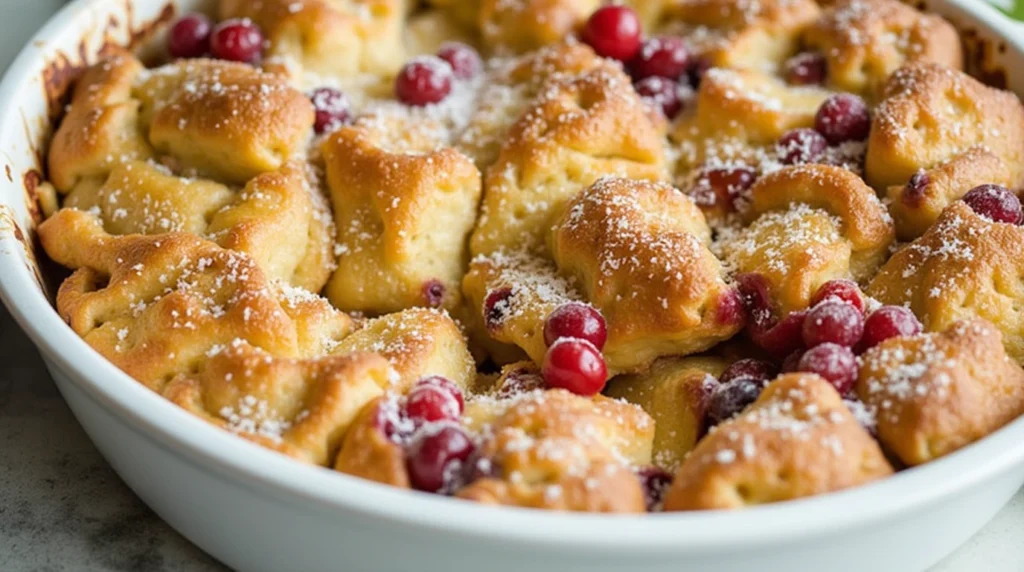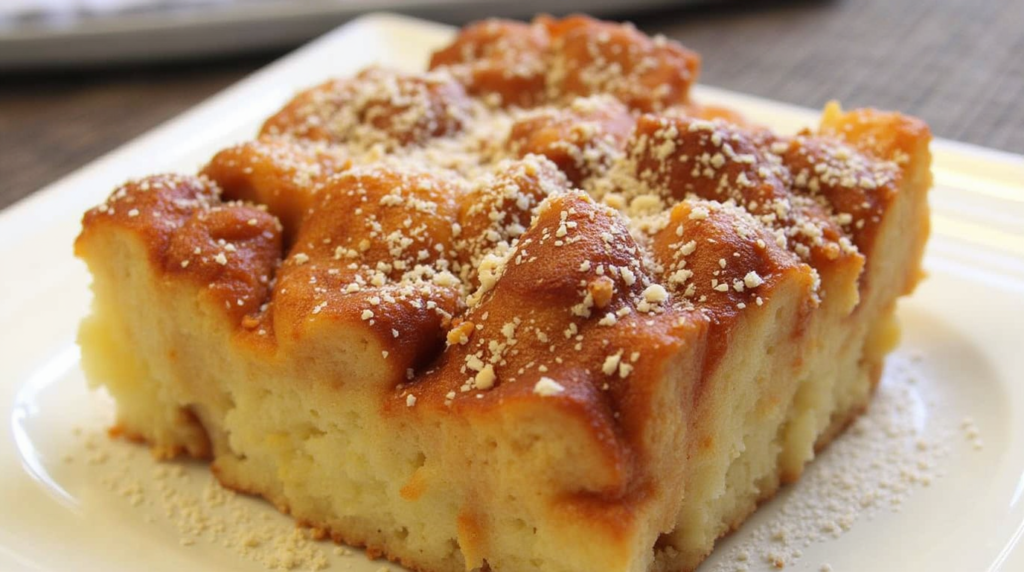What Is Brioche French Toast Casserole?
Brioche French toast casserole is a breakfast dish that feels indulgent yet approachable. Combining the rich, buttery flavor of brioche with the sweet custard-like goodness of French toast, this casserole takes your morning meal to a whole new level. It’s versatile, easy to make, and perfect for feeding a crowd. In this article, we’ll dive into everything you need to know about this delightful dish. From understanding what makes brioche French toast casserole so unique to crafting it step-by-step and even experimenting with variations, we’ve got you covered.

Definition and Overview of Brioche French Toast Casserole
At its core, brioche French toast casserole is a baked dish that combines layers of brioche bread with a rich egg mixture. Unlike traditional French toast that’s cooked slice by slice, this casserole is prepared in one go, making it an excellent choice for families or gatherings. It’s creamy on the inside, golden-brown on top, and bursting with sweet and spiced flavors.
This dish is often considered a hybrid between classic French toast and bread pudding, blending the best of both worlds. Thanks to its custard-like texture and ability to soak up flavors, brioche is the ideal bread for this casserole.
Why Brioche Makes It Special
What sets this casserole apart is the use of brioche bread. Known for its tender, buttery crumb, brioche soaks up the egg mixture beautifully, resulting in a texture that’s soft yet structured. The slight sweetness of brioche complements the spiced custard perfectly, creating a harmony of flavors that standard white bread just can’t replicate.
Key Benefits of a Casserole-Style French Toast
Why opt for a casserole instead of individual slices? For one, it’s a major time-saver. You can prep everything ahead of time and simply pop it into the oven. Plus, the baked version delivers a delightful contrast of textures—crispy edges paired with a soft, custardy interior. It’s also highly customizable, allowing you to experiment with add-ins like fruit, nuts, or even savory ingredients.
Essential Ingredients for the Perfect Brioche French Toast Casserole
Core Ingredients Explained (Bread, Eggs, and Milk)
The foundation of any brioche French toast casserole lies in its core ingredients, and each plays a crucial role. First, the bread. Using brioche is a game-changer—it’s soft, buttery, and slightly sweet, making it perfect for soaking up the egg mixture without falling apart. The eggs act as a binder, creating that creamy custard texture that’s the hallmark of this dish. Meanwhile, milk balances the richness and ensures the mixture is pourable and evenly coats the bread.
For a more decadent casserole, some recipes even call for heavy cream instead of milk. This tweak adds a luxurious silkiness, though 2% or whole milk works beautifully too.
The Role of Spices: Cinnamon and Nutmeg
Spices are where the magic begins. A touch of cinnamon infuses the casserole with warmth, while nutmeg adds a subtle, creamy depth. These spices don’t just flavor the dish; they enhance the aroma, making your kitchen smell irresistible. For a little extra flair, consider grating fresh nutmeg—it takes the flavor up a notch.
Optional Add-ins for Flavor Customization (Fruit, Nuts, and Syrups)
Customizing your brioche French toast casserole is half the fun. Add fresh or dried fruits like blueberries, cranberries, or sliced bananas for bursts of sweetness. Chopped nuts—think pecans or almonds—add a satisfying crunch. And don’t forget syrups: a drizzle of maple syrup or a swirl of caramel can elevate this dish from delightful to unforgettable. For a savory twist, cooked bacon or sausage crumbles provide an intriguing contrast to the sweet custard.
By starting with high-quality core ingredients and layering in your personal touches, you’ll create a casserole that’s both unique and unforgettable.
Step-by-Step Recipe Instructions for Brioche French Toast Casserole
Preparing the Brioche Base
Start by prepping your bread. Cut a day-old brioche loaf into 1-inch cubes. If you don’t have brioche on hand, challah or even a sweet panettone can work as substitutes. Using slightly stale bread is key—it soaks up the egg mixture better without turning mushy.
Once the bread is cubed, grease a 9×13-inch baking dish and layer the brioche pieces evenly. This step ensures an even bake, so every bite has the perfect mix of flavors and textures.
Creating the Egg Mixture
In a large mixing bowl, whisk together six large eggs, two cups of milk, and a half-cup of brown sugar. Add two tablespoons of melted butter, a teaspoon of vanilla extract, a teaspoon of cinnamon, and half a teaspoon of nutmeg. Whisk until the mixture is smooth and slightly frothy—this ensures all the spices are evenly distributed.
Carefully pour the egg mixture over the brioche cubes, ensuring that every piece is evenly coated. Additionally, you may need to press the bread down gently so it can fully absorb the liquid. Furthermore, make sure to check for any dry spots and adjust as needed to achieve a consistent soak.
Assembling and Baking
Once your casserole is assembled, let it rest for 10–15 minutes to allow the brioche to absorb the custard. Meanwhile, preheat your oven to 350°F. Bake the casserole uncovered for 40–45 minutes, or until the top is golden brown and the custard is set. You’ll know it’s ready when a knife inserted into the center comes out clean.
Tips for Achieving the Perfect Texture
For a crispier top, consider sprinkling a bit of turbinado sugar over the brioche before baking. If you prefer a softer texture, cover the casserole with foil for the first 20 minutes of baking, then remove the foil to let it brown. These small adjustments let you tailor the dish to your liking.
Follow these steps, and you’ll have a brioche French toast casserole that’s as visually stunning as it is delicious.

Creative Variations for Baked Brioche French Toast
Substitute Breads: Challah, Cinnamon Rolls, and More
While brioche French toast casserole shines with brioche, other breads can work wonders too. Challah, with its similar rich and eggy texture, is a fantastic substitute. During the holiday season, leftover panettone or stollen can add a festive twist. Even yeast-raised cinnamon rolls bring a unique, pre-flavored sweetness that makes the casserole extra special. Just ensure the bread is slightly stale to absorb the egg mixture thoroughly.
Sweet and Savory Add-ins
Customization is where you can let your creativity shine. Add a handful of fresh or dried fruits like cranberries, blueberries, or diced apples for a pop of color and flavor. If you’re a fan of crunch, sprinkle chopped nuts like pecans or almonds over the top before baking. Feeling adventurous? Try a savory spin by incorporating cooked bacon or sausage into the mix—it’s a surprising twist that balances the dish beautifully.
Alternative Toppings and Sauces
No casserole is complete without a delicious topping. Aside from maple syrup, consider drizzling caramel, honey, or even a tangy fruit compote over your creation. For an indulgent touch, sprinkle powdered sugar or add a dollop of whipped cream. You can also experiment with sauces like dulce de leche or butter pecan for a luxurious finish.
For more creative culinary ideas, check out Kamala Recipes’ amazing selection of sweet and savory dishes.
How to Store and Reheat Your Brioche French Toast Casserole
Refrigeration and Freezing Guidelines
Storing your brioche French toast casserole correctly ensures it stays fresh and delicious. Leftovers should be refrigerated within two hours of baking. Simply cover the casserole with foil or transfer portions to an airtight container. It will keep in the fridge for 3–4 days.
For longer storage, freezing is a great option. Slice the casserole into individual portions, place them on a parchment-lined tray, and freeze until solid. Then, wrap each portion tightly or store them in a freezer bag. They’ll last for up to three months.
How to Maintain Freshness Upon Reheating
Reheating your casserole while keeping it moist and flavorful is easy. For refrigerated leftovers, warm them in the oven at 300°F for about 15 minutes. Cover with foil to prevent drying out. If reheating from frozen, thaw overnight in the fridge before warming. For a quick option, use a microwave, but be cautious—it can make the texture soggy.
By following these simple storage and reheating tips, you’ll enjoy every bite of your brioche French toast casserole long after it’s baked. For more storage tips and meal ideas, explore Kamala Recipes’ expert cooking guides.

FAQs About Brioche French Toast Casserole
Can I Make This Dish Ahead of Time?
Absolutely! Brioche French toast casserole is perfect for meal prep. You can assemble the casserole the night before, letting the bread soak up the custard overnight. Simply cover it with foil or plastic wrap and refrigerate. The next morning, pop it in the oven, and you’ll have a warm, comforting dish without any hassle. This make-ahead option is ideal for holidays, brunches, or busy mornings when you want to impress with minimal effort.
What Is the Best Way to Serve It?
While this casserole is delicious on its own, the right toppings can elevate it. Maple syrup is a classic choice, but fruit syrups like blueberry or strawberry add a burst of freshness. Dusting powdered sugar on top or adding whipped cream makes it feel extra special. Serve it alongside fresh fruit, crispy bacon, or even a dollop of yogurt for a balanced meal. Pair it with coffee or a mimosa for an unbeatable breakfast experience.
How Long Does It Last in the Refrigerator or Freezer?
In the refrigerator, your brioche French toast casserole can stay fresh for up to 4 days, provided it is stored in an airtight container. Additionally, if you plan to freeze it, portioning the dish into individual servings makes reheating more convenient. When properly wrapped, it can last for up to 3 months in the freezer. Moreover, for the best texture, always reheat it in the oven, and you’ll have a comforting breakfast ready to enjoy whenever you like.
Expert Tips for Perfecting Brioche French Toast Casserole
Using Ramekins for Individual Portions
If you love the crispy edges of a brioche French toast casserole, consider making it in individual ramekins. This method ensures that every serving has the perfect balance of crusty top and custardy interior. Arrange the ramekins on a baking sheet for easier handling, and bake at the same temperature. The smaller portions also bake faster, so check for doneness around the 25-minute mark.
Layering Techniques for Better Flavor
For an even more flavorful casserole, try layering the bread and add-ins strategically. Spread half the bread cubes in the dish, sprinkle your chosen add-ins—like fresh berries or nuts—then add the rest of the bread on top. Pour the custard mixture evenly, ensuring it seeps through all the layers. This approach creates a harmonious blend of textures and flavors in every bite.
How to Create Crispy Edges
Achieving the perfect crispy edges is all about technique. For extra crunch, sprinkle a thin layer of turbinado sugar on top before baking. Alternatively, bake the casserole uncovered for the entire duration, as covering it can trap moisture. If you’re reheating leftovers, use the broiler for a couple of minutes to restore the crispiness.
By following these tips, you’ll not only elevate your brioche French toast casserole to the next level but also ensure a dish that’s both impressive and incredibly delicious.
Nutritional Considerations for Brioche French Toast Casserole
Caloric Breakdown of a Serving
A typical serving of brioche French toast casserole is both indulgent and satisfying. On average, one portion contains about 350–400 calories, depending on the ingredients and add-ins. The dish provides a good balance of protein from eggs, carbohydrates from the bread, and fats from the milk and butter. While it’s rich, the portion size makes it manageable within a balanced diet.
Adjustments for Healthier Versions
If you’d like to lighten things up, swap whole milk for almond or oat milk. Reduce the sugar by half or use a natural sweetener like honey. Incorporating fresh fruits instead of sugary toppings also adds vitamins and keeps things wholesome. These small changes can make your casserole both delicious and nutritious.

Serving Suggestions and Pairings for Brioche French Toast Casserole
Drinks to Accompany Your Dish
A warm, cozy dish like brioche French toast casserole needs just the right drink to go with it. For breakfast, freshly brewed coffee or a creamy latte works well and brings out the sweet and spiced flavors. If it’s part of a brunch, a bubbly mimosa or a cool glass of orange juice is a great way to balance the richness. For those who prefer non-alcoholic choices, herbal teas like chamomile or mint are a good pick to refresh the palate and complete the meal.
Ideal Sides for a Balanced Meal
Pairing the casserole with complementary sides can transform it into a complete feast. Fresh fruit, such as berries or sliced citrus, provides a refreshing contrast to the rich custard. For a savory twist, serve alongside crispy bacon, sausage, or even scrambled eggs. If you’re going for a lighter meal, a simple yogurt parfait with granola adds both texture and nutrition. These combinations ensure your table feels both inviting and well-rounded.
By considering thoughtful pairings, you’ll make your brioche French toast casserole the star of any gathering while offering a variety of flavors to suit every palate.

